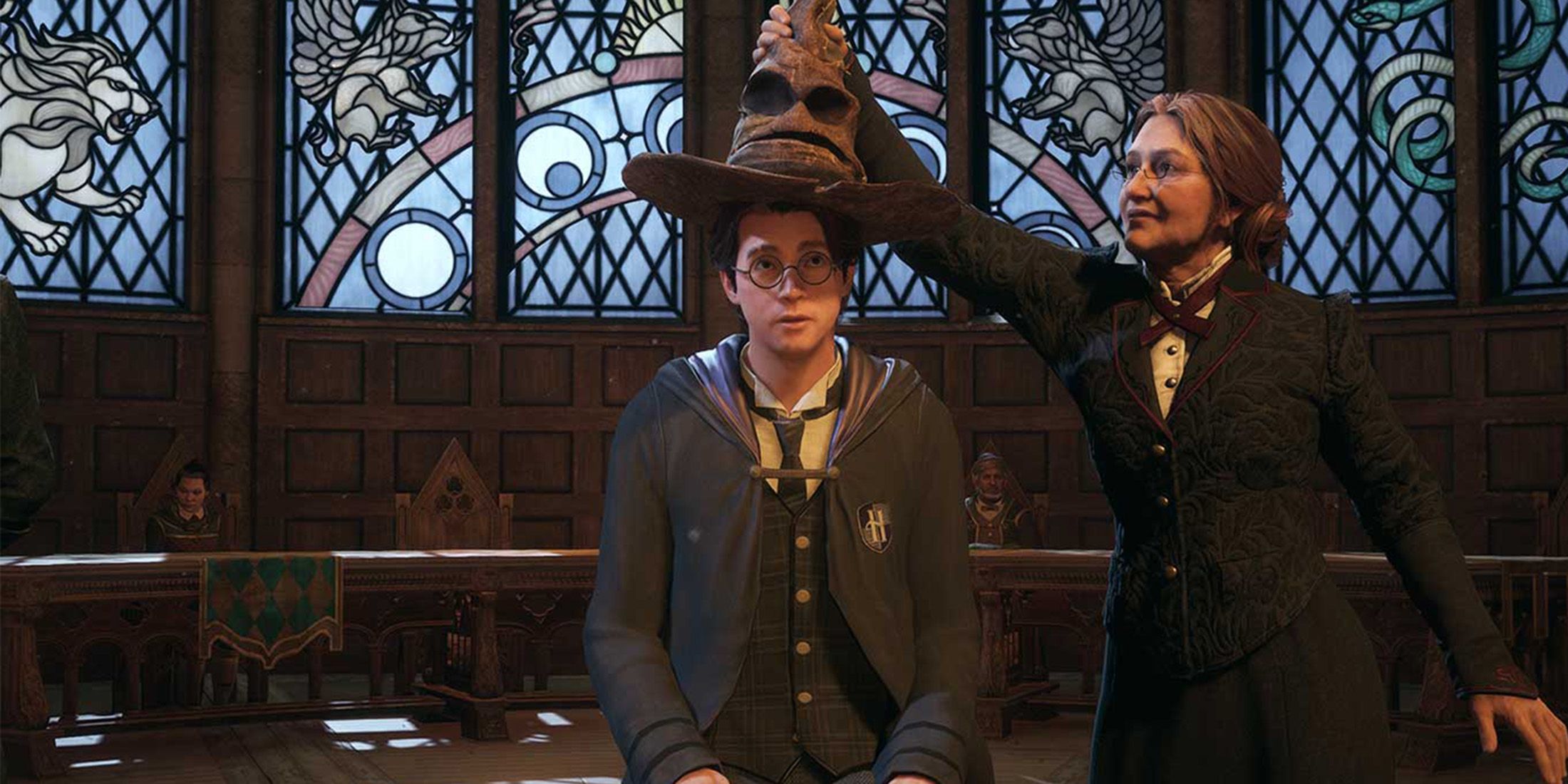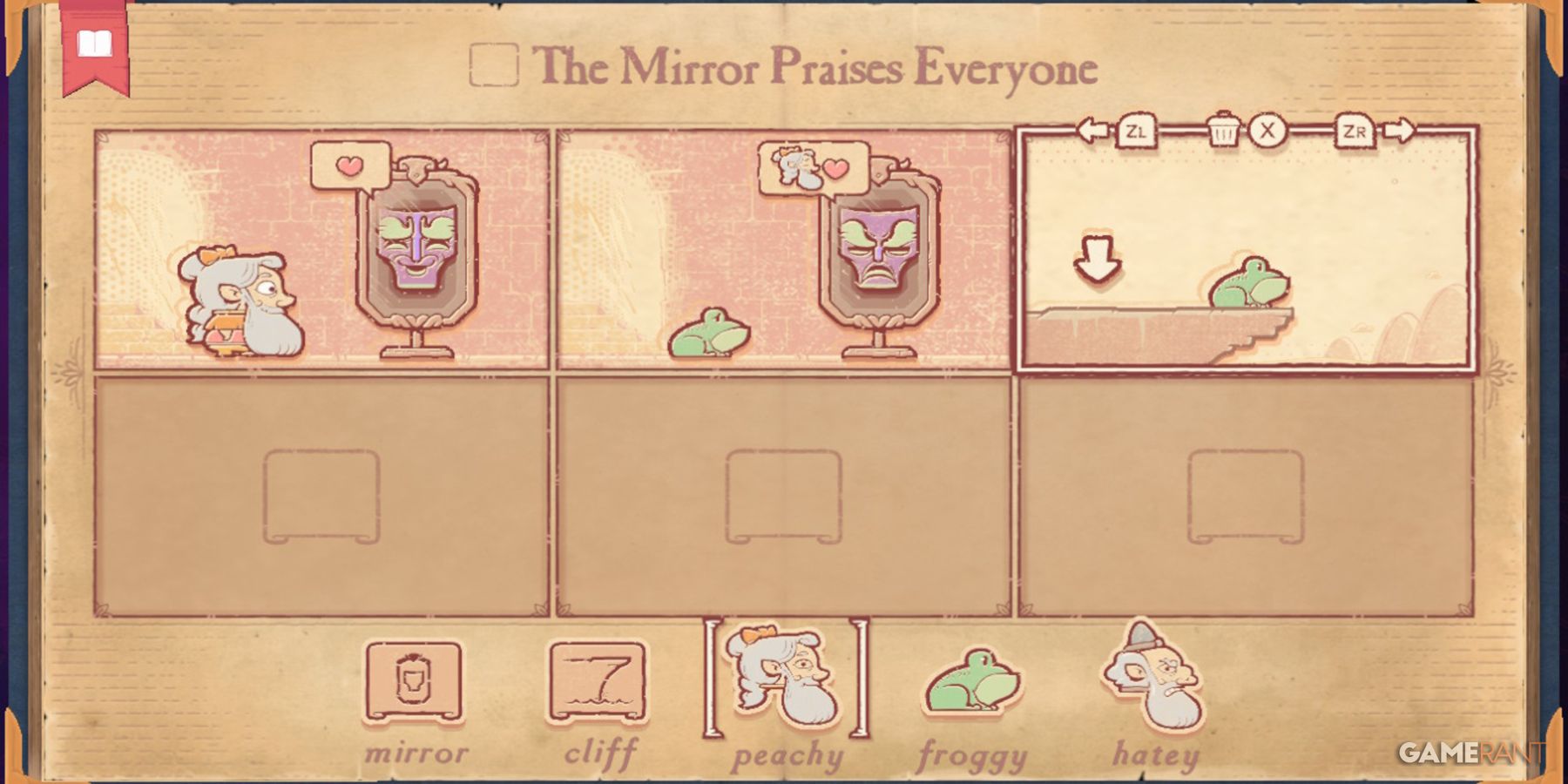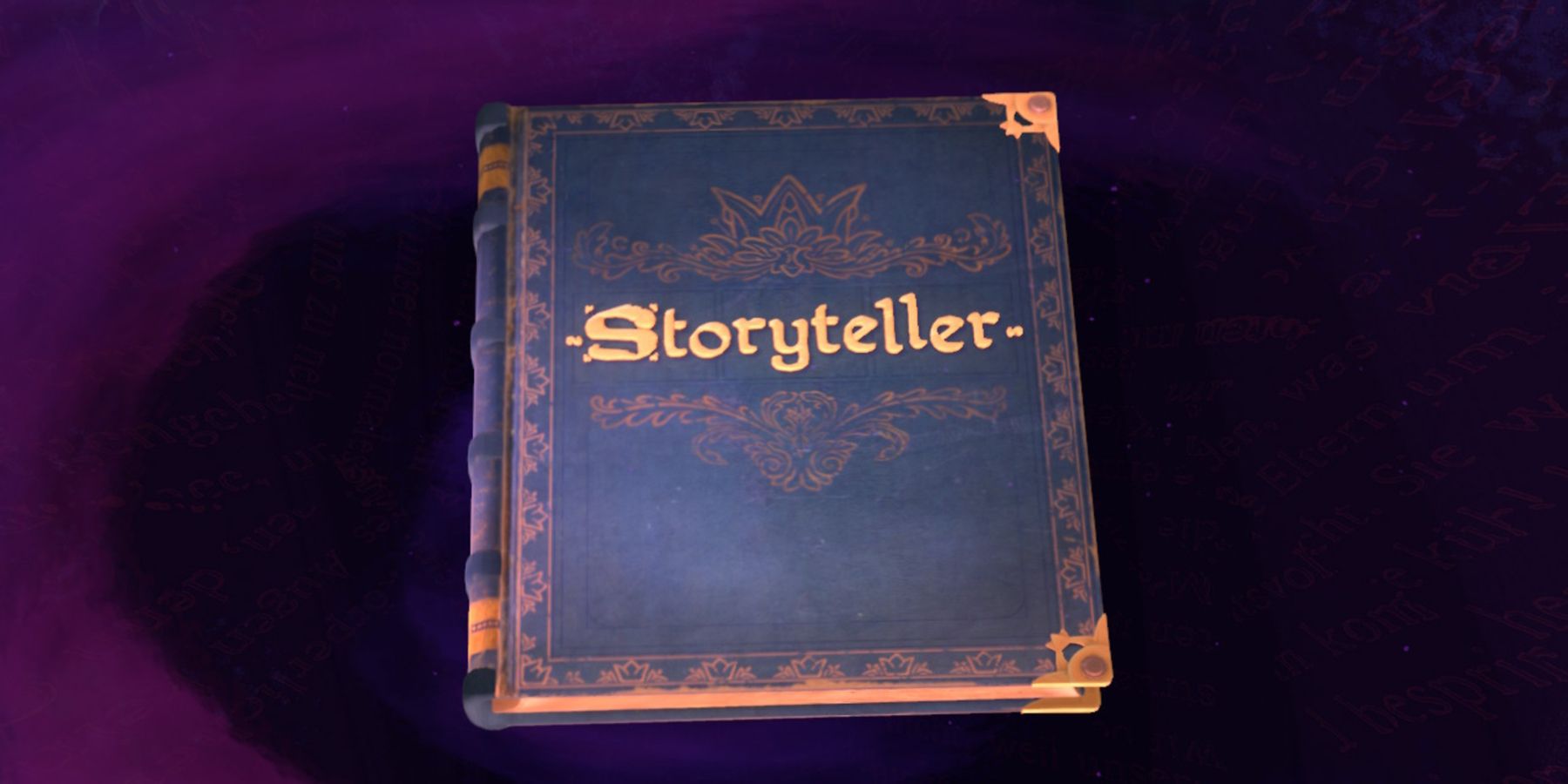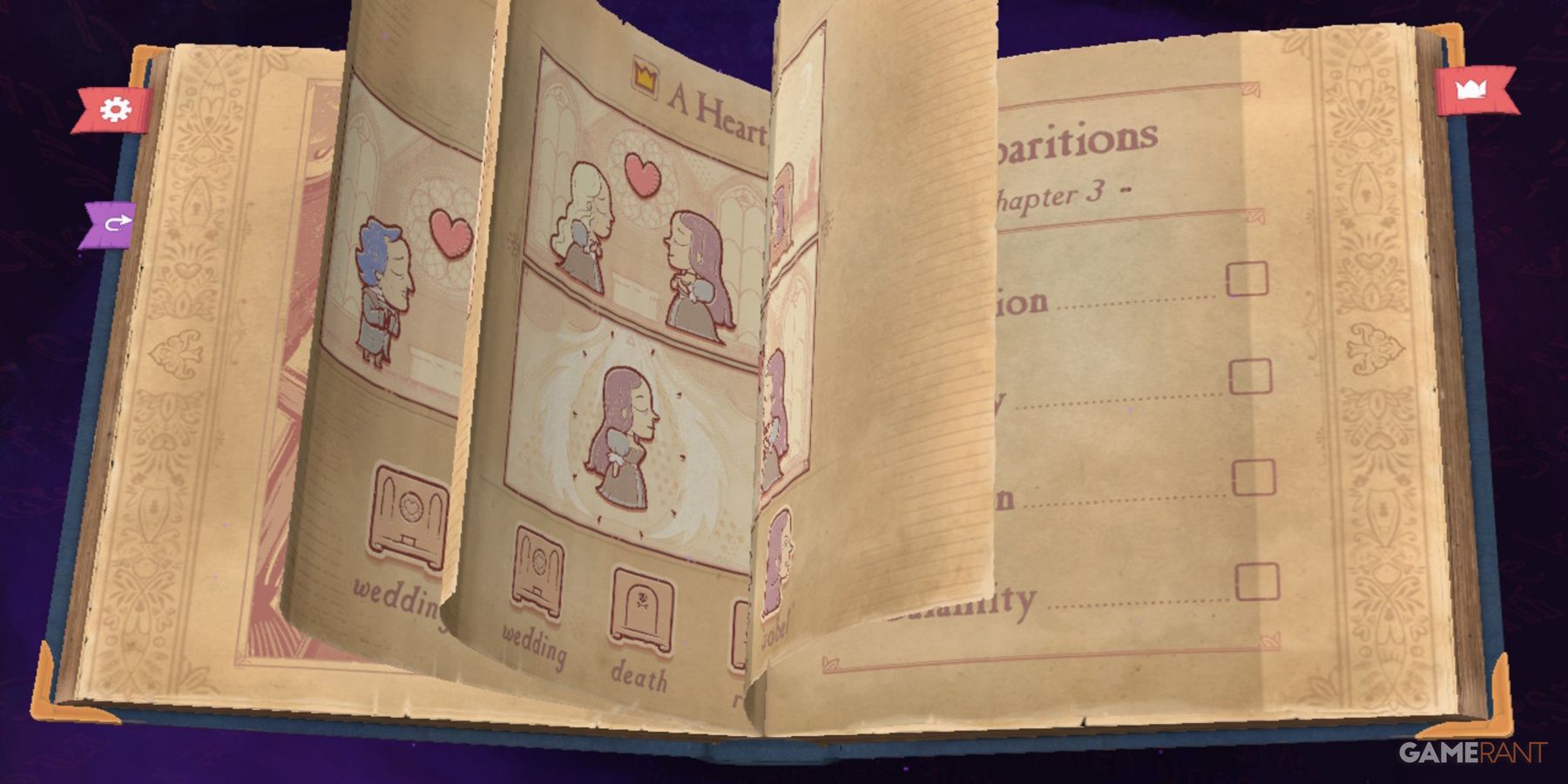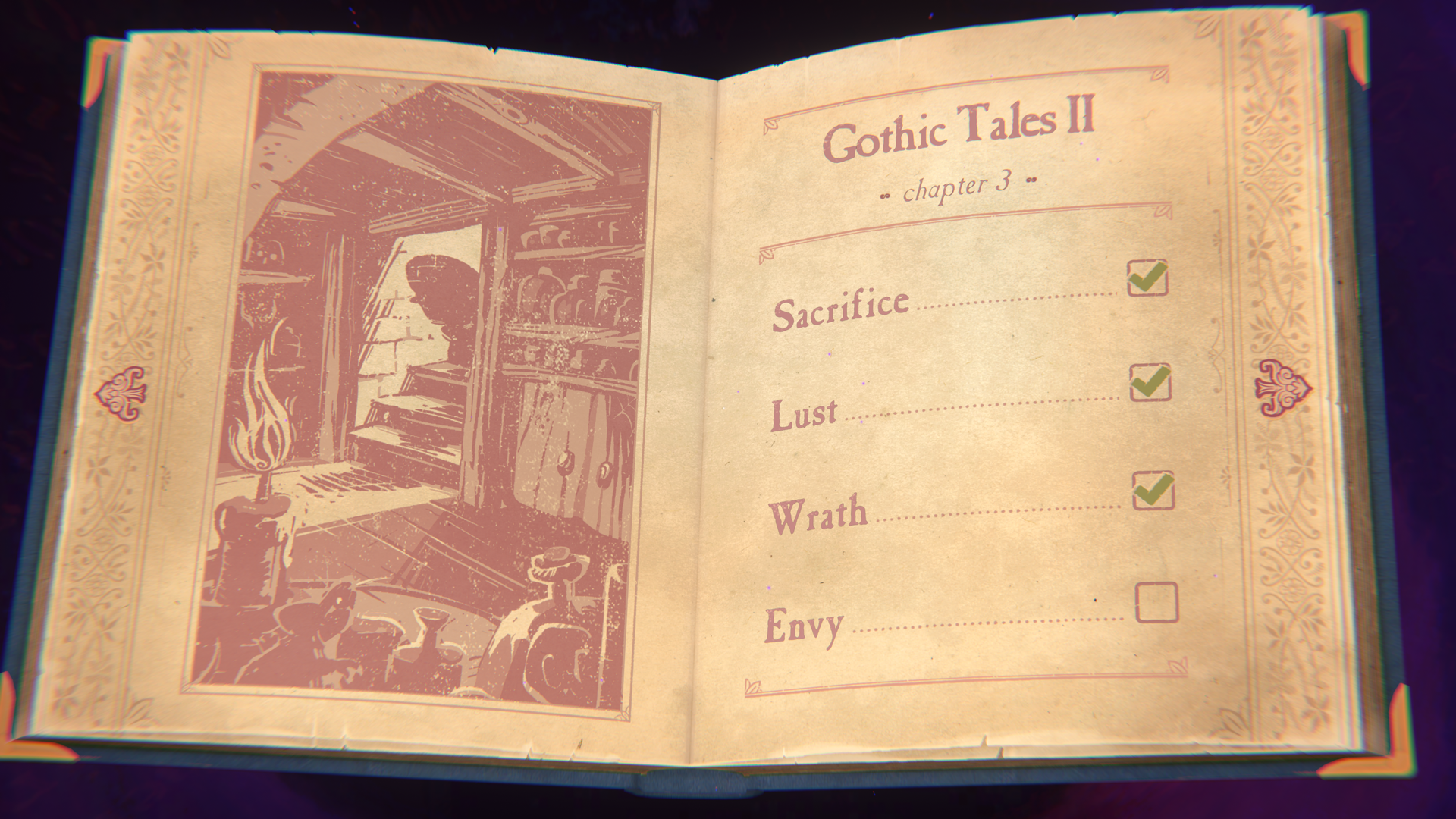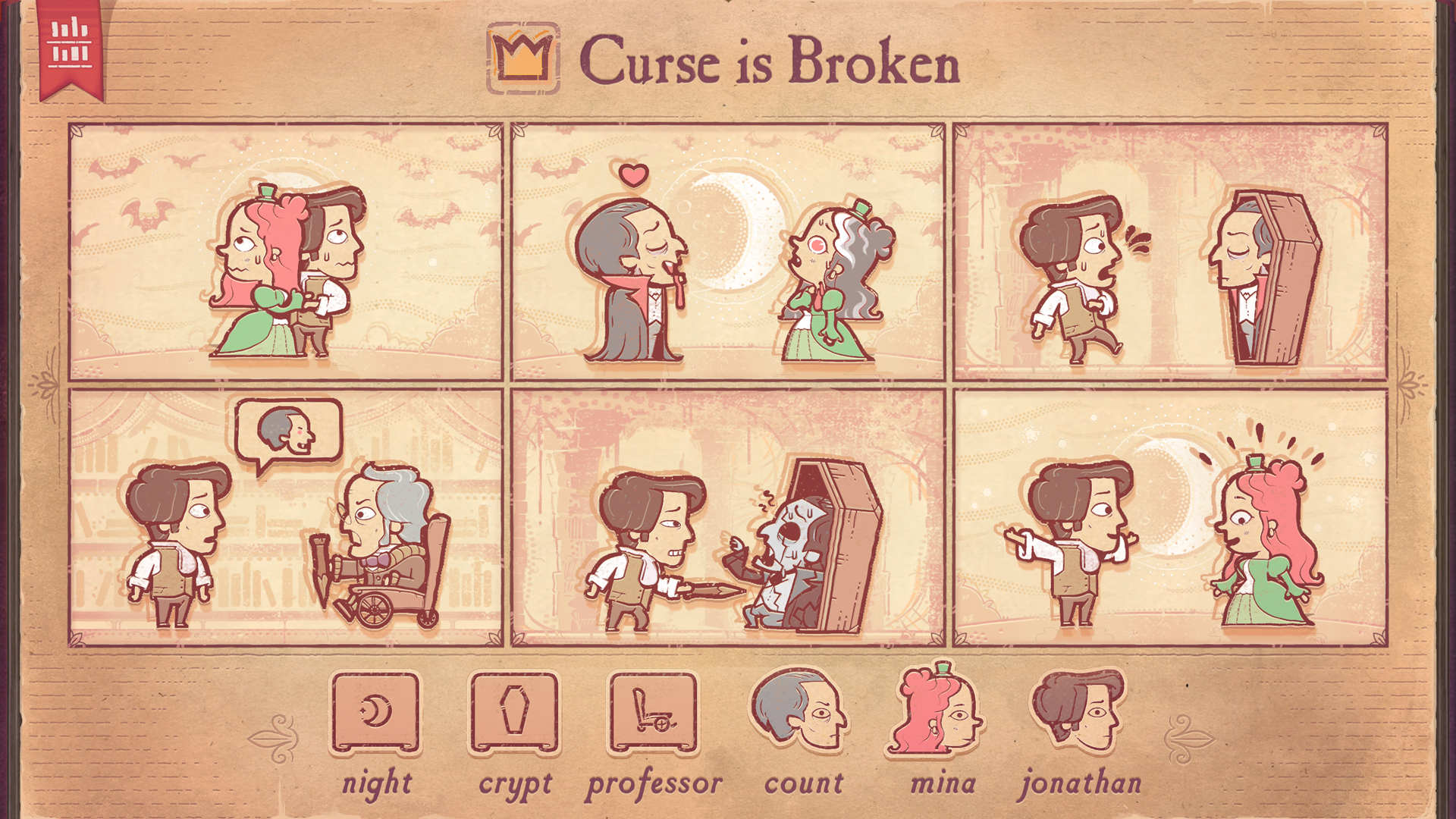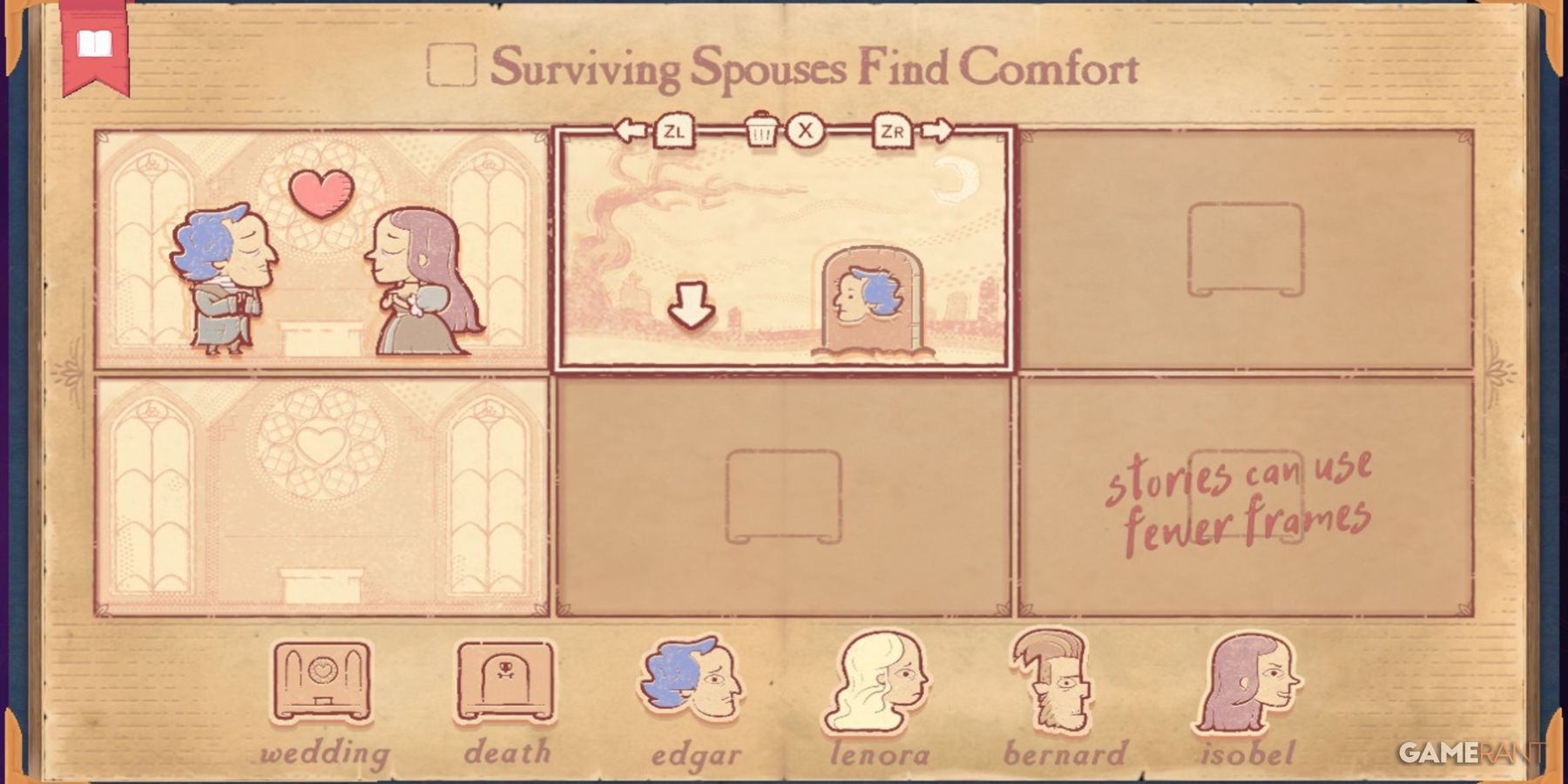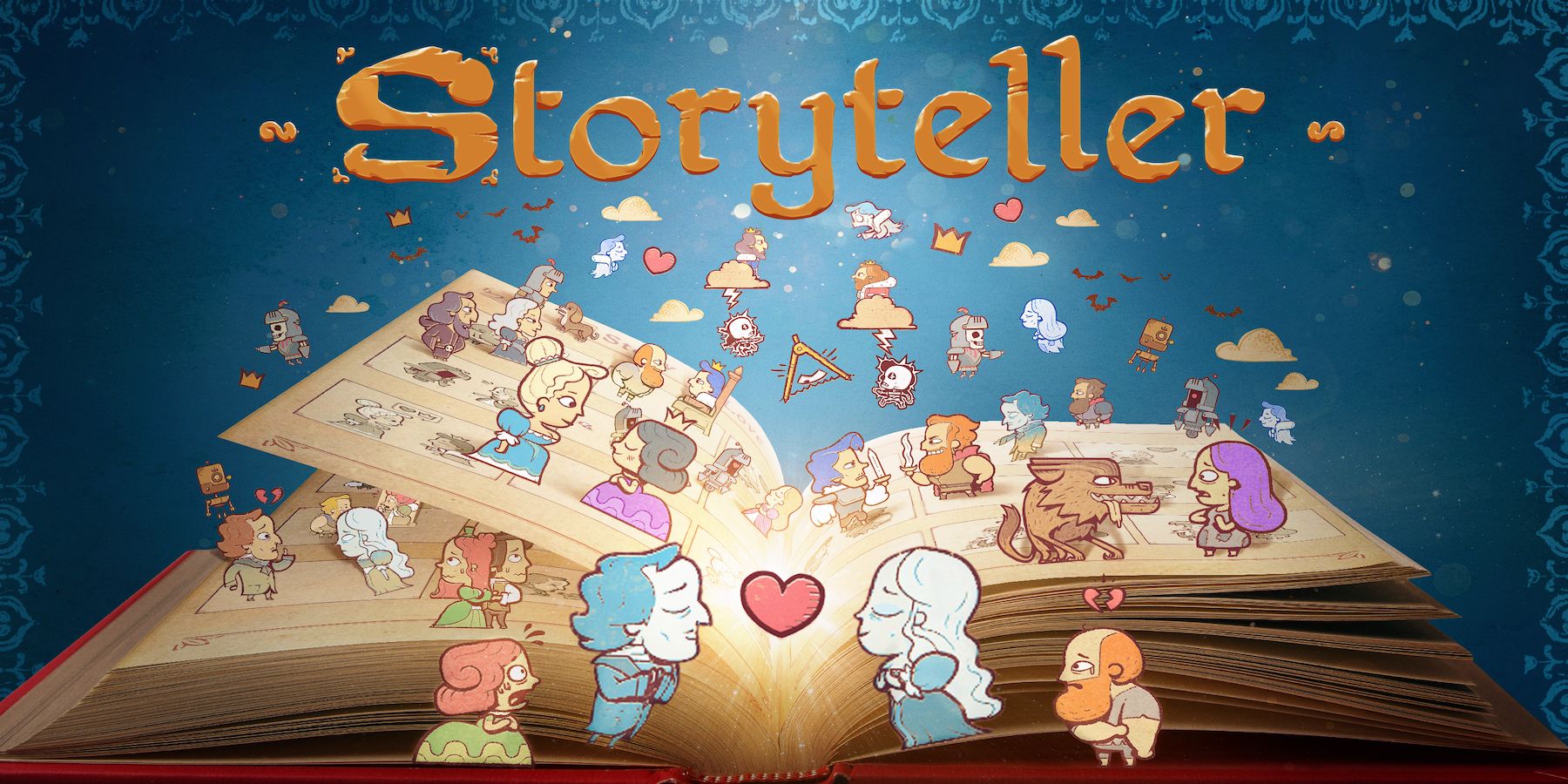Storyteller is a puzzle game that brings classic stories to life. It allows players to enter the world of Romeo and Juliet, Dracula, and others, and make their own version with different characters, scenes, and elements with a simple drag-and-drop feature. After being in development for 15 years, Storyteller refreshed its look with a crisp old-school yet classic art style that’s blended with a matching soundtrack.
Game ZXC recently spoke with developer Daniel Benmergui on the struggles he faced while creating Storyteller, how players can unlock weird achievements, and why the design changed drastically. This interview has been edited for clarity and brevity.
Q: Can you tell us a little bit about yourself and what Storyteller is?
Benmergui: I am an independent game developer from Buenos Aires, Argentina. I've been doing experimental games and art games for a while, and Storyteller is sort of the biggest project that I've done. It's been going on for almost 15 years, so it's been a while. Storyteller is a puzzle game about building stories; a game that is about you, the person playing [and] building the stories, and not consuming stories that we put in the game for you.
Q: As you said, it's been in development for a long time. During that time, what do you think was the most important lesson of this journey?
Benmergui: I'm not completely sure yet because the game is not out yet [as of this interview], so I guess the most valuable lessons from development are going to come in a year from now after I have time to think about how things went and all that. I would say that one thing I learned from Storyteller is that some projects that are trying to do something very new, sometimes need clock time in order for you to figure it out. Sometimes you need to work hard on the game and then stop for a while and then come back to it later. It happened to Storyteller about three or four times.
Every time I went back to the game, some big problem had suddenly become so obvious after a fix. All I did was stop working on the game for like six months or a year. I guess some projects need some time off in order to solve the hard problems.
Q: As a solo developer, you have to wear multiple hats. So what's your favorite part about game development?
Benmergui: For Storyteller, I am not a solo developer anymore. There's two more people working on it. One is Jeremias Babini, who is the designer of the game, the artist, and the one who made the game look great. And Zypce, our musician, did all the sound design and the soundtrack for the game. I'm not a solo developer anymore.
I made a bunch of games by myself for a while, so I do have experience working by myself. But I have to say, it's a lot better to work with other people. When you're working by yourself, the good thing is that you have the freedom to make all the choices that you want. When you're working with somebody else, all of their work, it's also in your hands, and that if you change your mind about how things work, you're managing somebody else's time and effort, right? So big changes of mine or big design changes are kind of a no-go when you're working with somebody else, but they make the game so much better. It's worth it.
Q: You previously described Storyteller as the hardest design that you've ever created. Why is that?
Benmergui: This is something I'm thinking about these days because the game is about to come out, and I'm afraid that something is going to happen that would be regrettable. The cool thing about Storyteller is that it's playing with soft elements, human elements, like how we interpret a comic strip and stuff. It's all very soft things because if you show the same comic strip to one person and another person, they're going to come up with slightly different interpretations of what's going on. Storyteller exists in that space in which there's human interpretation and culture, and it depends on where you're from. You might interpret things differently. The hard part of Storyteller is making something that feels that it works and it makes sense for most people playing the game.
It's going to seem like an easy problem, right? You're going to play the game, and you’ll say, “Yeah, you know, it's a game with stories. It's simple. The rules are simple. The characters are simple.” It's a simple game, but there's a lot of stuff going on behind the scenes, stuff that we have to work on and discard, and trying to figure out how can we make up rules for the game that makes sense and feel natural. Then, we also have to communicate perfectly in a way that you're not confused about what's going on with the game. I think we did a good job at that, but that also means that all the effort that we put into making work is going to be invisible.
Because people are not going to notice, people are going to assume it's a simple game. It is not a simple game, and it was a lot of effort to make things work. It's just that since we did sort of a good job, it's hard to notice. The hardest part of Storyteller is deciding what the rules of the game are in a way that makes it playable for people other than ourselves. We relied a lot on play-testing this game, and often I'm not such a big fan of play-testing too much, but in this case, we had to see if our brains were in the shape of Storyteller. We found we’re overlooking interpretations that people are going to naturally have about the game that we didn't think of. It happened a lot, so we had to go back to the drawing board. That's what made the game hard: its rules around [the] soft parts of humans.
Q: Storyteller allows players to give old classics new twists. Could you give us an example?
Benmergui: One of the levels is actually a pint-sized version of Romeo and Juliet, in which both characters get heartbroken, drink poison, and the other character comes back to life [and] realizes the lover drinks poison, and they drink poison themselves. That's what happens in the game, which is a Storyteller version of Romeo and Juliet. But if you think about it, the goal we gave you for that level is that there are two occasions of poison drinking. That's what the goal says, double poison drinking, but we are not specifying how that happens. So one thing that you can do is have one of the lovers drink poison, and then he himself comes back to life and then realizes that his lover is still dead.
Now that he's come back to life, he can drink poison again. You follow the goal of the level, which is a version of Romeo and Juliet, but then you made a different version. Romeo drinks poison twice, or Juliet drinks poison twice. That kind of funny stuff that we figured out while we were developing the game where we were making up the rules. We were thinking about Romeo and Juliet. “So how can we do Romeo and Juliet and make a level of Romeo and Juliet in this game?” When we experimented for a bit, we realized that there are other ways that you can think about that story, so we try to include those things in the core game.
Q: With those different twists that players can do, it seems like Storyteller kind of plays off of the “weird and unconventional.” What's the goal of playing off of that?
Benmergui: One thing that I wanted to have is making you be able to experiment a lot and try a lot of things. Because some games allow you to explore stories, let's say – I'm grabbing an old example – Heavy Rain, which is sort of a choose-your-own-adventure kind of game, [it’s] just very complicated. The problem is that every time you choose a path, stuff happens and so trying something else takes time. You have to go back, you maybe have to load a game, you have to wait for animations and all stuff.
For Storyteller, all experimentation is to be very snappy. You try this, and then you can try this and decide that. You can scrap the whole story and start over, and it's just a matter of seconds. But then when we gave you the tools to do that, it means that also there's stuff that you are going to try to do that we have to take into account. You may try weird stuff, so what happens when you try that? At some point, we bump into that, and we are like, “Well, let's handle this and do something funny about this.”
So there are a lot of corners in the game, and in fact, many of the achievements that are going to be on Steam, for example, are about really weird stuff that you can try with the game that some people are going to try. Some people try it by accident. They're like, “what happens if I start to do all this stuff?” But I guess the achievements are a way to nudge you to work. Like, “What would happen if somebody drank too much wine?” That's the weird corners of storytelling.
Q: Can you explain how you went about creating the levels, especially “Duke Shoots Detective To Avoid Prison?”
Benmergui: The way we design levels for this game is that often we come into the game with an idea from a very specific story. What happens if someone shoots somebody and then their spouse takes revenge? We start with the idea that we bring from outside the game, try it, and we see how close can we get to the idea. Do we need a new rule? Do we need a new character? Do we need a new setting? Do we need something to make this happen? And when we do, we have this story that we came up with.
Once we have it working on the game, then we ask ourselves, “well, we had to add all these elements to make this story work, what else can we do with that?” What else can we do with these elements? We start combining stuff. We do that sometimes [and] interesting ideas show up. We had the detective, for example, and we wanted to make these murder mystery levels. We had the detective witness somebody doing some crime, or somebody could report a crime to him, and he would react to that, but you could never shoot the detective because he's the detective. Why would somebody try to shoot the detective? But at some point, we asked ourselves, well, in what situation could the detective actually get shot? When we thought about that, we came up with an idea, “Oh, maybe we can make this situation.”
Sometimes this happens to players in a playtest or people we show the game to, they actually try to do that. Like, “I want to get the detective shot. So I'm going to try.” We never added that idea into the game, but then it made sense to us. Either the idea comes from ourselves or from somebody watching somebody play again. In that particular level, you have to figure out how cornered somebody has to be in order to be willing to shoot the detective. There is a situation that is possible. Almost every level in Storyteller has a bit of that. You need to come up with an idea of how can you make this happen with the elements that you have. And that particular level is, well, how can you get the detective to be shot?
Q: Do you have a level that you personally enjoyed the most?
Benmergui: I do. When I think about Storyteller, one level that I like quite a bit is the one where in order to marry the queen, the queen needs to be impressed. She won't marry anybody. One way to impress the queen is to rescue her from kidnapping. But the thing is, in one level, we only give you the villain and the queen, and you have to make a marriage happen. And you're like, “what? How do I even do that?” There is a way to do that and when you realize that it's pretty fun. It's pretty clever. I'm very proud of them. There's an alternative ending. You can do the story in two different ways, and the secondary way is also very fun.
Q: The game has been in development for a long time, and also a thing that changed was the art of the game. Why did that happen?
Benmergui: What happened was that when I made the original prototype that won the award, I was doing pixel art because I like pixel art and also it's the only art I can make. I didn't have an artist back then, so I was like, “well, this is going to be pixel art.” But as I was doing that, I had to, in order to communicate what's happening with the game, I needed to use a lot of text. The old version, there was a lot of text at the top, explaining to you what's happening in each frame. And it felt cumbersome, and it felt redundant because you could see the character and you needed text. It felt wrong.
At some point, we were like, “how can we get rid of that text? Can we get rid of that text and just use visual elements?” And the answer is yes, but you need to have more detailed factors with more subtle expressions. So you could communicate their inner life in a way that made immediate sense, and you could read it and you were not confused about what's going on. We needed to add a lot more details to the characters than I had in the original prototype. That also meant that the characters had to be bigger, like larger on the screen. Once we did that, we were like, “well, now how do they look?” Because we need to make a decision about the style.
With pixel art, it was pretty simple to just add or remove some pixels, and the start is sort of there, but once you have detailed illustrations, it's like what is it going to look like? The artist eventually decided to go for a style that looks a bit like old children's story books, antique children's story books, but keep a bit of the dark tint. The game looks nice, it's funny, but it's not exactly cute. It's a bit dark, which makes sense because the game goes into dark places sometimes. It's a game with humor, but it goes to dark places.
Q: What was the process of getting Zypce on board with Storyteller’s music?
Benmergui: That’s actually a good story because he's actually here in Argentina. He’s a playwright – he makes theater plays, acts, and sings. He’s part of the theater scene here in Buenos Aires. I was a fan of his work, so I followed him as he was making displays all over the city. I think it was right when the pandemic started, and I was like, “Hey, man, how about making music and sound for a game? Do you want to do that?”
It was the pandemic, so he was like, “well, yeah. I mean, I cannot make any plays while we are in a pandemic, so it's fine. Let's do that.” That's how he joined the game and now, besides being the sound designer, he's also part of the game itself like we talk about design with him and he's part of the team.
Q: Can you explain what his music adds to the gameplay experience?
Benmergui: The style of music that we chose is classical music tunes, but intermixed with some original composing because what we wanted was for the music to feel familiar, but at the same time its own thing. So that's why we went with many well-known classical music compositions. The game itself also evokes some classical things like Shakespeare, Edgar Allan Poe, and a bit of the Bible. It’s evoking stuff that you know about so we wanted the music to do something like that, but to evoke something that you're familiar with yet you're seeing it in a different way.
[END]
Storyteller is out now on PC and Nintendo Switch.

